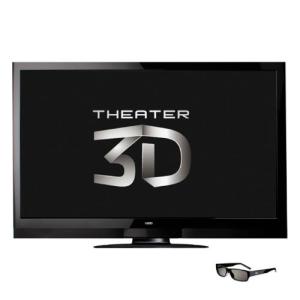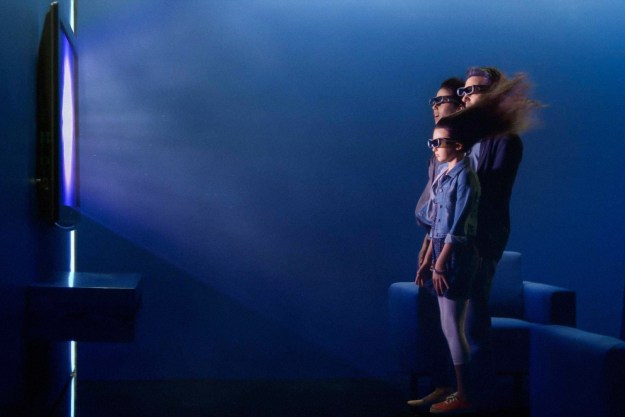
Vizio has made a name for itself churning out big-screen TVs at prices less likely to give consumers sticker shock than those offered by many of its competitors, and at this week’s CES show in Las Vegas the company has announced it will be diving wholeheartedly into 3D technology, expanding its initial 65-inch Theater 3D offering to a full line of high-definition sets. Vizio’s Theater 3D offerings will range from 22 to 71 inches, and the company claims they will be up to twice as bright and have significantly less cross-talk than current active shutter 3D TVs—thanks in part to passive, lightweight Theater 3D glasses.
“Theater 3D is a significant move forward from the conventional active shutter TVs introduced last year,” said Vizio CTO Matthew McRae, in a statement. “Users immediately experience a brighter picture, no flicker, less crosstalk, and the comfortable glasses enabling them to enjoy the content without the technology getting in the way.”
Vizio’s Theater 3D eyewear uses passive circular polarized 3D filters, which Vizio says enables its 3D HDTV to deliver a brighter picture with less motion blurring and a wide horizontal viewing angle. The design means the eyewear is less expensive and never has to have batteries changed or recharged—and Vizio will be packing up to four pairs of the glasses with each Theater 3D television (depending on the model) as well as teaming with designers like Oakley for more stylish versions.
Vizio’s Theater 3D televisions will support a broad range of 3D formats (including Frame Packing, Side-by-Side, Top and Bottom, Sensio HiFi 3D, and RealD) so they can be used with a broad range of 3D devices and services. All Vizio Theater 3D models will feature 802.11n WiFi and Vizio Internet Apps (so users can stay tapped into Netflix, Amazon Video on Demand, Pandora, Facebook, Flickr, Twitter, and a myriad of other Internet services); Vizio also offers a QWERTY-equipped universal remote (optional in some models) to keep up with messaging. High-end models will feature Vizio’s “VIA Plus,” which will be a rebranded, customized version of Google TV.
Some Theater 3D models will feature Vizio’s Edge-Lit Razor LED technology with independent dimming of 32 zones across the frame that that company claims boosts the HDTV’s dynamic contrast ratios as high as 10 million to one. Other models will feature Vizio’s TruLED backlighting with 120 dimming zones.
So far, Vizio has announced 21 Theater 3D models ranging from 22 to 58 inches, although the company has not revealed pricing or availability dates for any of them. And missing from that list of Theater 3D sets? The 71-inch monster.
Editors' Recommendations
- You Asked: 3D VR, QDEL technology, and TV size vs. quality
- Samsung, Google are attacking Dolby Atmos’ monopoly on 3D sound, and it’s going to get ugly
- What is MPEG-H? The burgeoning 3D audio standard explained
- 3D-printed eartips could mean way more comfortable and better-sounding earbuds
- This free tool takes the guesswork out of planning a home theater


